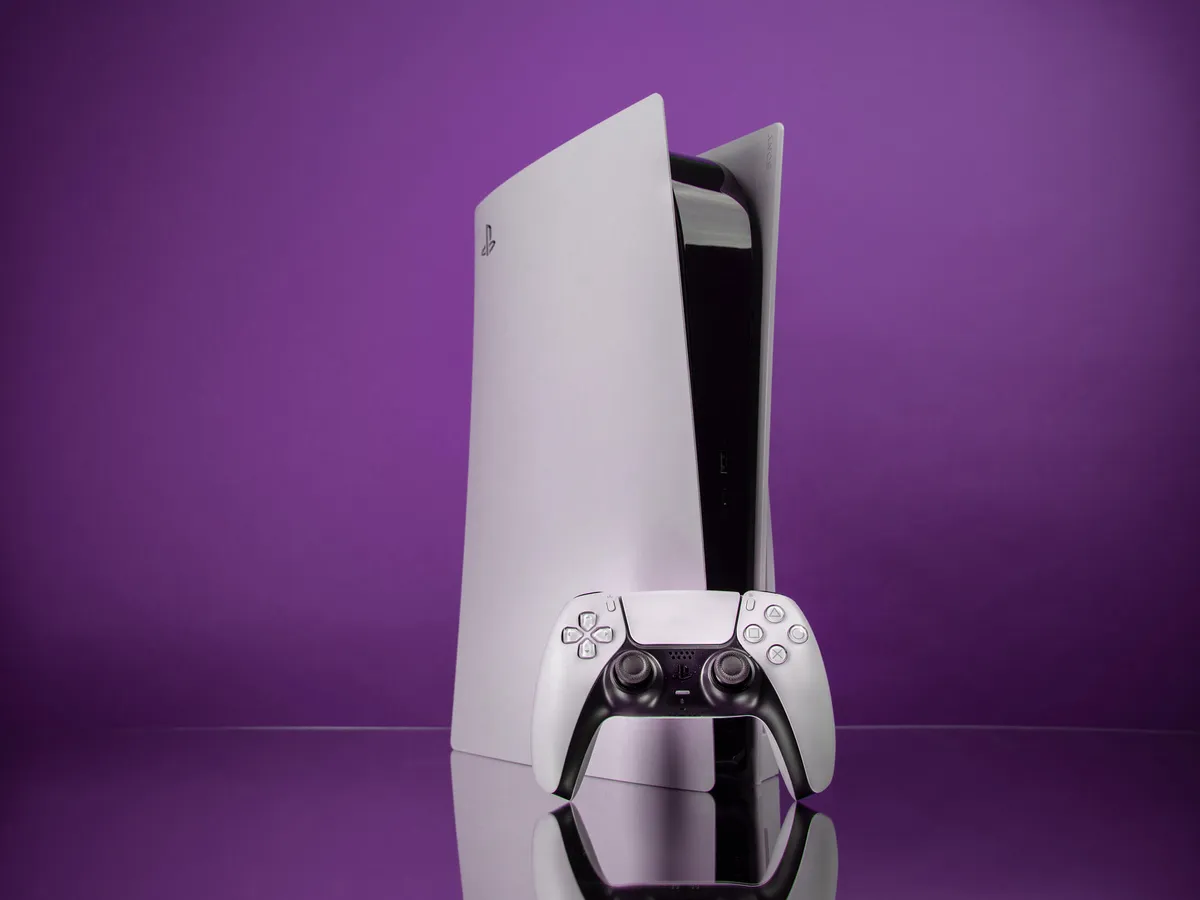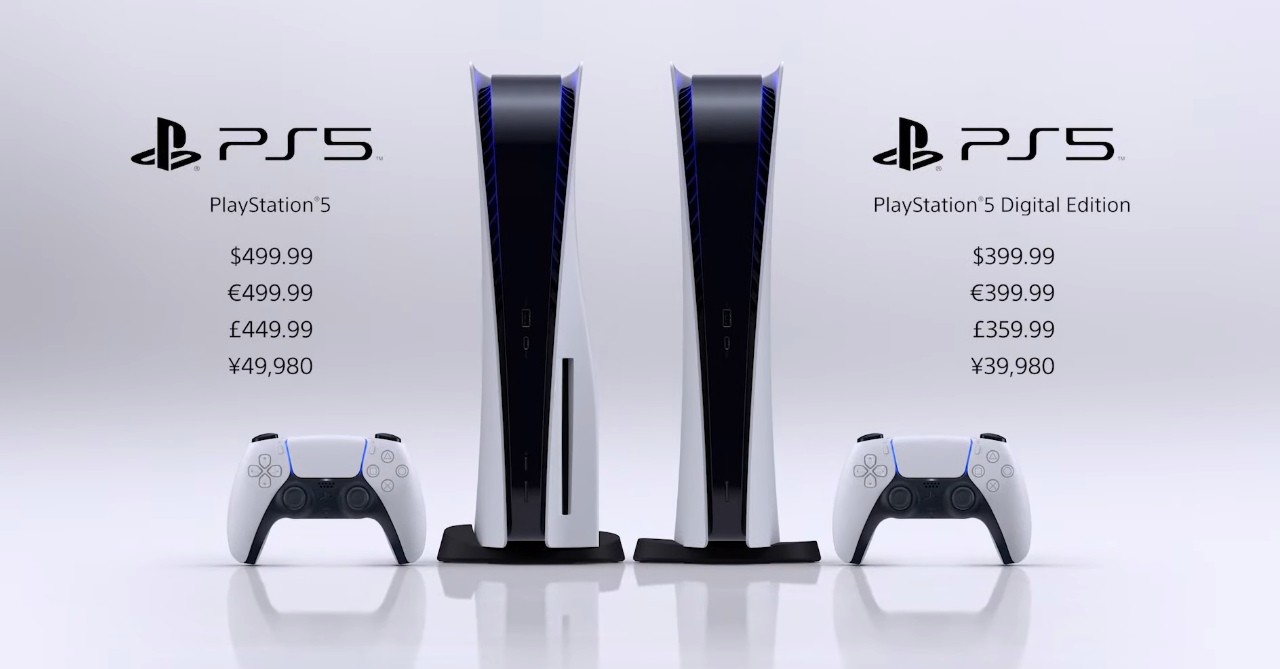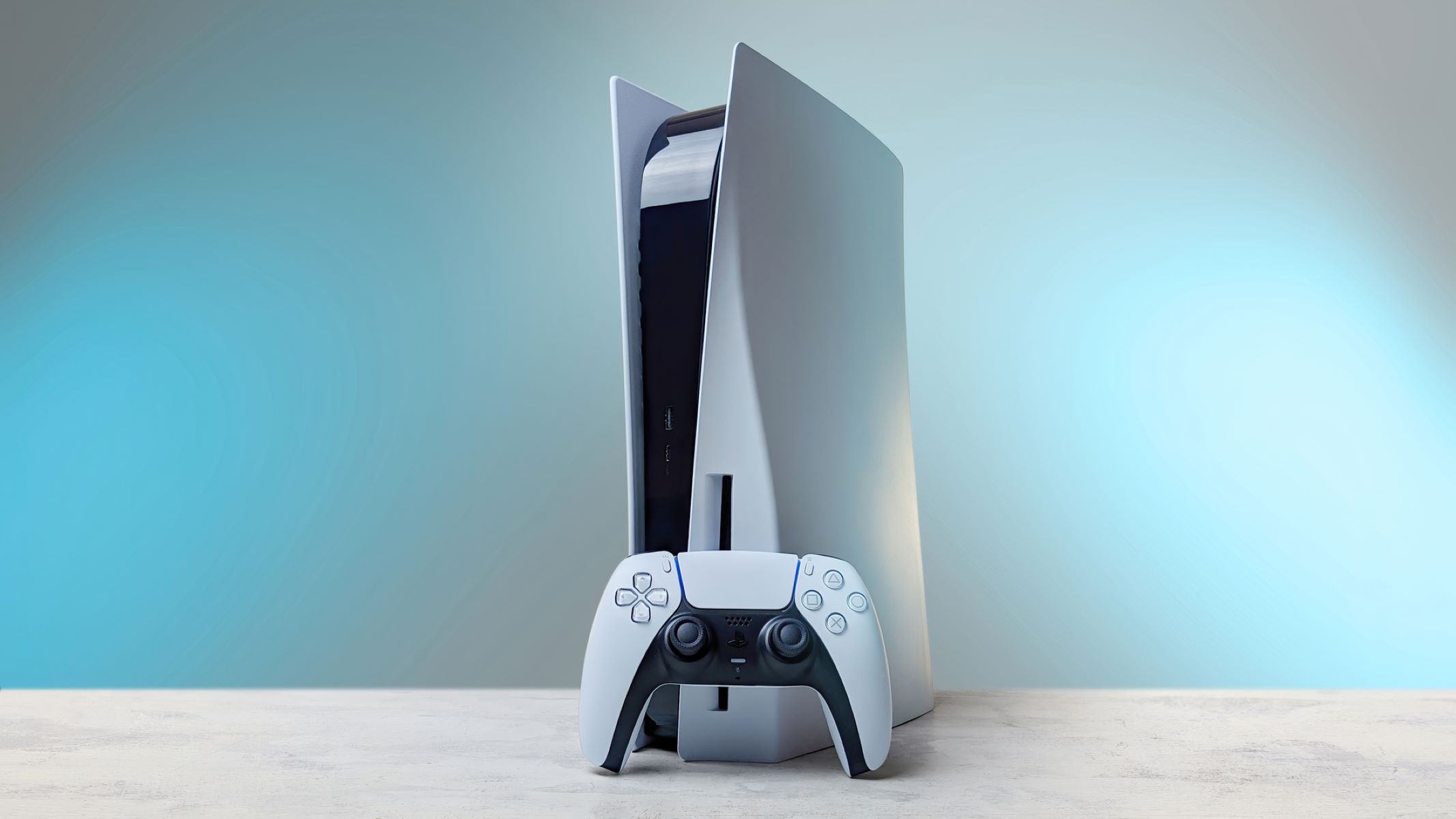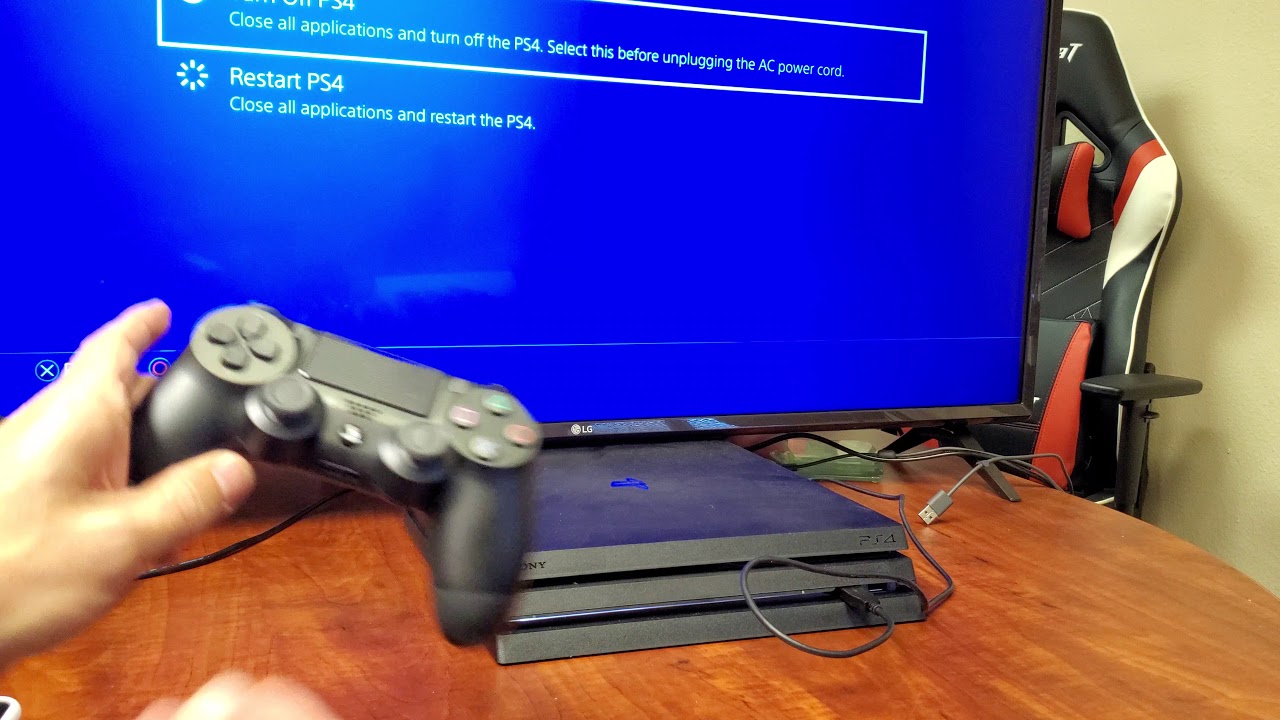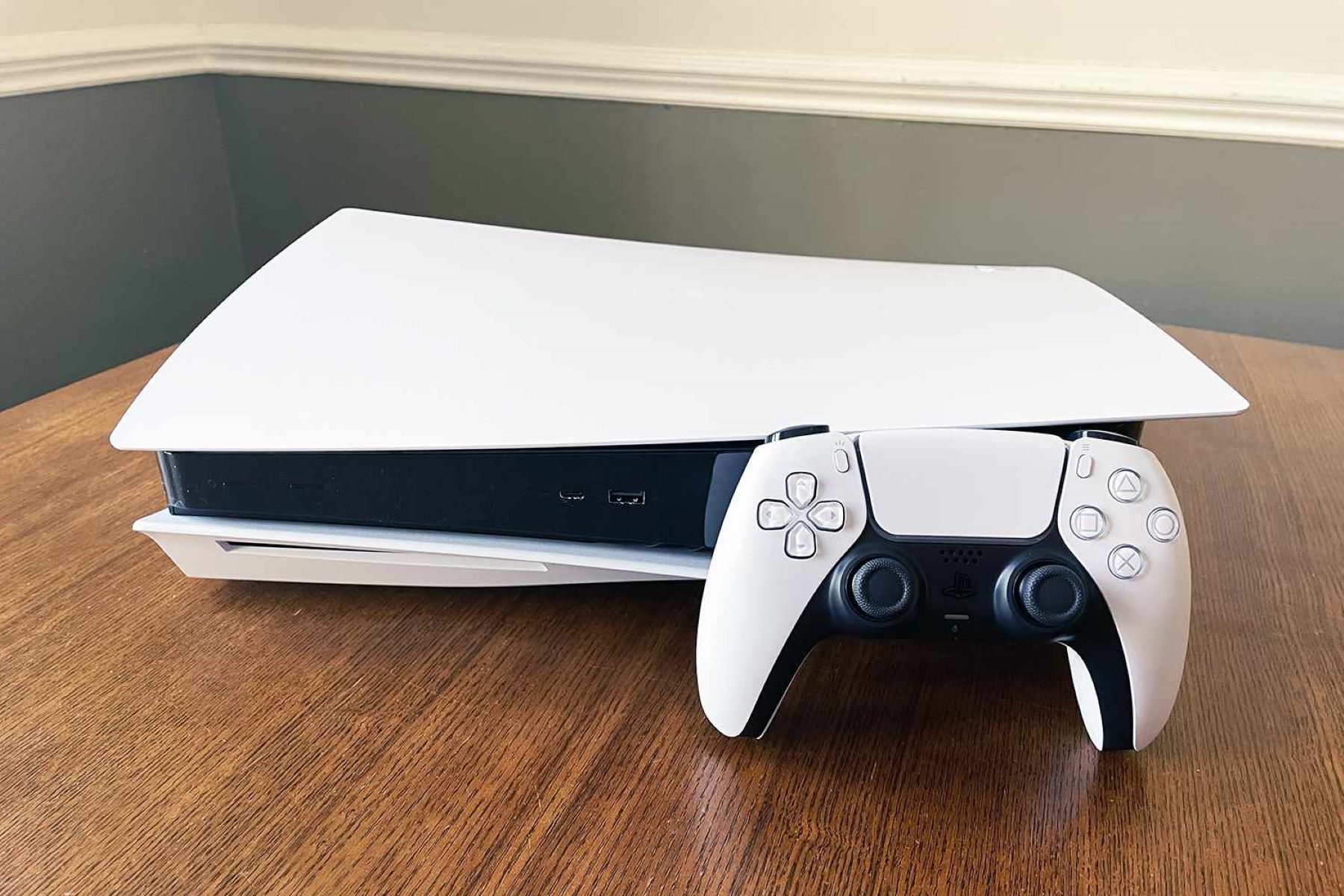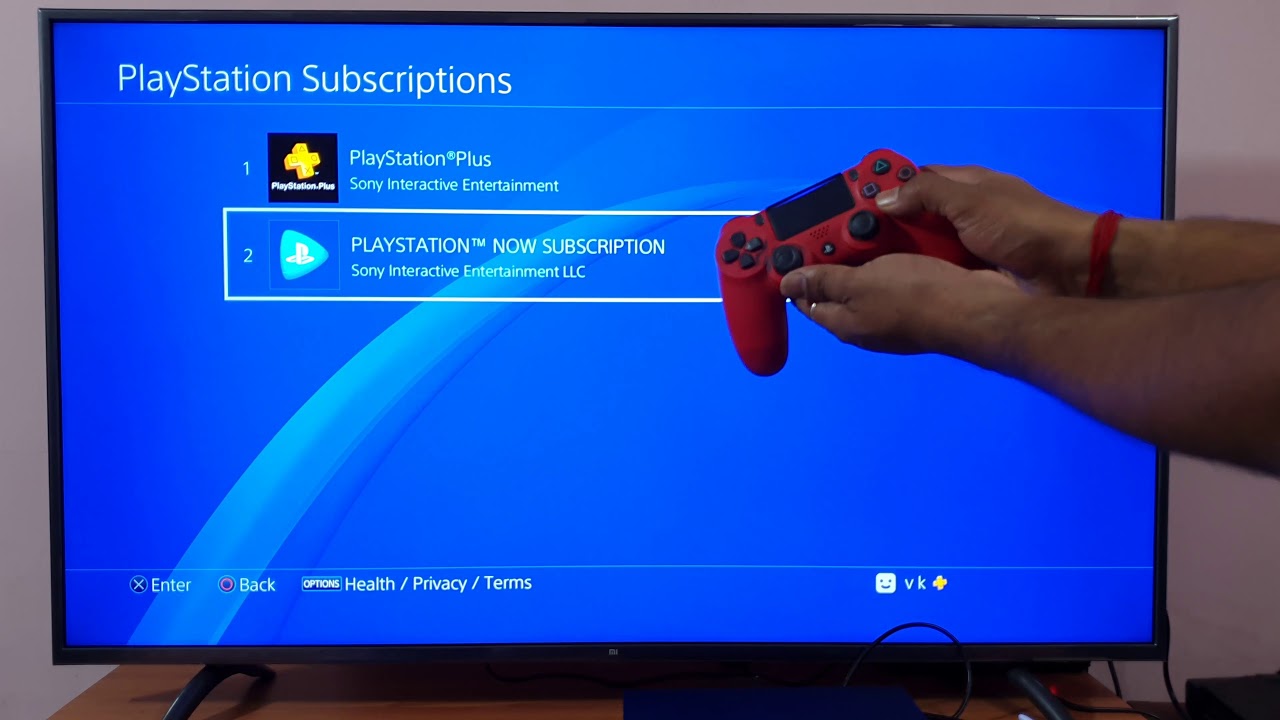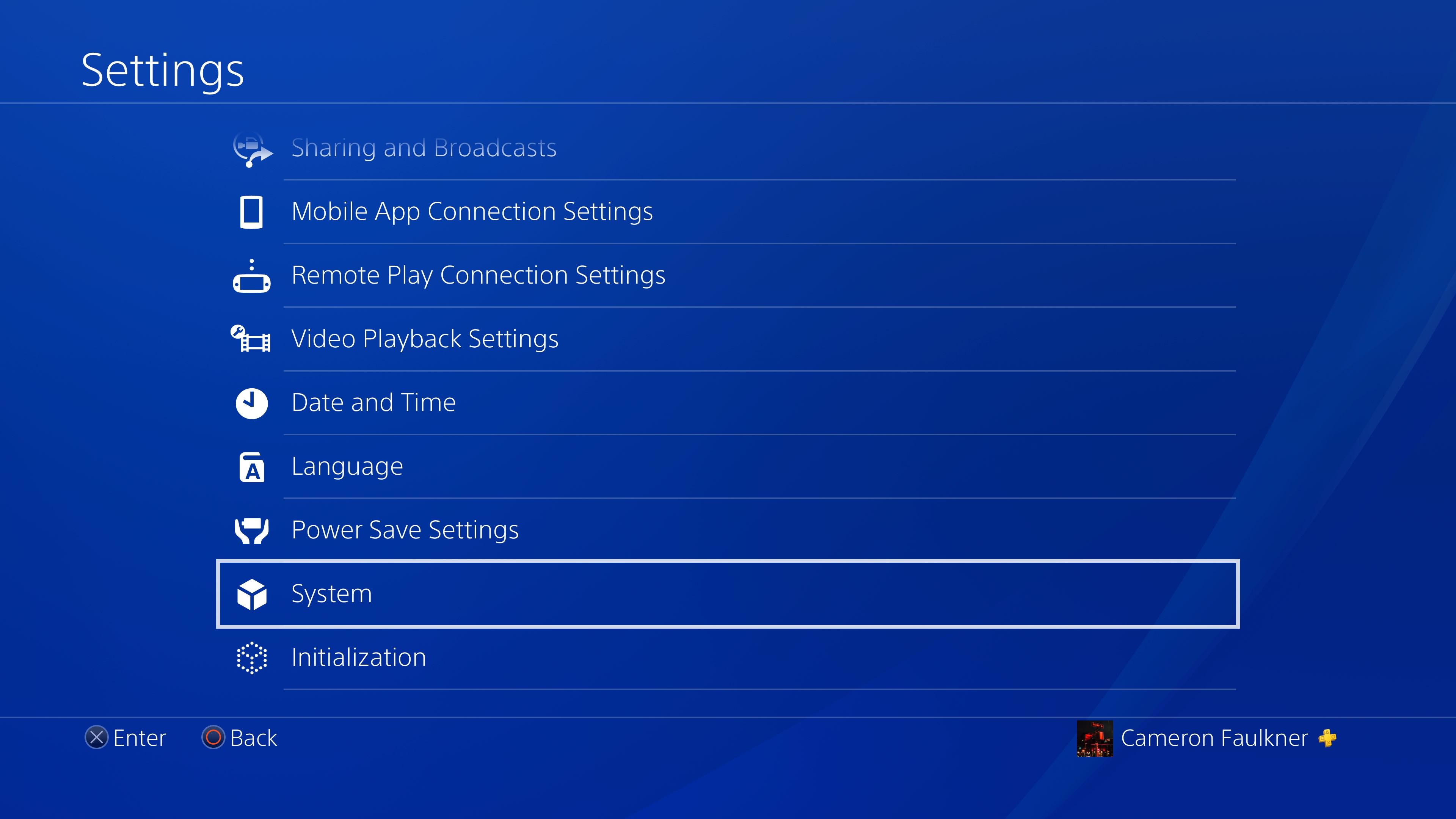Introduction
The PlayStation 5, commonly known as the PS5, has become one of the most talked-about topics in the gaming community. From its powerful hardware specifications to its innovative controller, the PS5 has garnered significant attention. However, one aspect that has caused some to hesitate before making a purchase is the price tag. The PS5 is undoubtedly an expensive investment, leaving many wondering why it carries such a high price. In this article, we will explore the factors that contribute to the PS5’s cost and shed light on the reasons behind its hefty price tag.
It is crucial to understand that developing next-generation technology comes with substantial costs. The PS5 represents a leap forward in gaming technology, offering immersive gaming experiences and stunning visuals. These advancements require substantial research and development investment, which ultimately factors into the final price of the console.
Another significant factor is the advanced hardware components that power the PS5. From the powerful CPU and GPU to the ultra-fast SSD storage, these components contribute to the overall cost. The manufacturing costs associated with producing these high-quality components further add to the price of the console.
Furthermore, the PS5 boasts enhanced graphics and ray-tracing capabilities, allowing for realistic lighting and reflections in games. This level of visual fidelity requires cutting-edge technology, resulting in higher production costs compared to previous console generations.
In addition to graphics, the PS5 introduces an ultra-fast SSD storage system. This technology significantly improves load times and game performance, but it also adds to the overall cost. The inclusion of this advanced storage solution demonstrates Sony’s commitment to providing gamers with top-of-the-line technology, even if it comes at a higher price point.
One of the standout features of the PS5 is its innovative DualSense controller. This controller incorporates haptic feedback and adaptive triggers, providing a more immersive and realistic gaming experience. The development and production of this unique controller undoubtedly contribute to the overall cost of the console.
Moreover, the high production costs of the PS5, coupled with limited supply, impact its price. Manufacturing a sophisticated console like the PS5 requires substantial investment in production facilities and materials. The limited availability, combined with the high demand, has created a scarcity factor that also affects the price.
Lastly, the ongoing global chip shortage has undoubtedly impacted the pricing of electronic devices, including gaming consoles. The shortage has disrupted the supply chain, leading to increased production costs and a higher price for consumers. The PS5 has not been immune to these challenges, further contributing to its expensive price tag.
While the PS5’s price might seem steep when compared to previous generations, it is important to consider the significant technological advancements and the overall gaming experience it offers. As we delve deeper into the various factors that contribute to its cost, we will gain a better understanding of why the PlayStation 5 is priced the way it is. So, let us now explore each factor in detail and unravel the reasons behind the PS5’s expensive price.
The Cost of Developing Next-Generation Technology
The PlayStation 5 represents a significant leap forward in gaming technology, offering unparalleled performance and features. However, such advancements in technology come at a cost. Developing a console like the PS5 requires extensive research and development, which translates to a substantial investment.
The PS5’s development began years before its release, with teams of engineers, designers, and software developers working tirelessly to create a console that exceeds the expectations of gamers. The process involves designing and testing various hardware components, refining the software architecture, and optimizing the gaming experience.
Research and development costs are a significant contributor to the overall price of the PS5. From conducting market analysis to identifying the latest trends in gaming, Sony invests heavily in understanding consumer expectations and preferences. This information helps shape the direction of the console’s development, ensuring it delivers an immersive and cutting-edge gaming experience.
Additionally, developing next-generation technology involves overcoming technical challenges and pushing the boundaries of what is currently possible. This often requires creating new technologies and designing custom hardware components tailored specifically for the console. These innovations require substantial investment in research and engineering.
Furthermore, the cost of securing intellectual property rights and licensing technologies also adds to the overall expenses. Sony collaborates with various partners to integrate their technologies into the PS5, ensuring that it delivers the best gaming experience possible. These partnerships come at a price, which is ultimately passed on to the consumer.
Lastly, extensive testing and quality assurance processes contribute to the cost of developing next-generation technology. Before the PS5 reaches the hands of consumers, it undergoes rigorous testing to ensure its reliability, performance, and compatibility with a wide range of games and accessories. These testing processes require time, resources, and skilled labor, all of which contribute to the console’s final price.
In summary, the development of next-generation technology comes with significant costs, ranging from research and development efforts to securing intellectual property rights and incorporating cutting-edge hardware components. The PS5’s high price reflects the immense investment required to create a console that surpasses its predecessors in terms of performance, features, and gaming experience quality. The subsequent sections of this article will dive deeper into the specific components and features of the PS5 that contribute to its overall cost.
Advanced Hardware Components and Manufacturing Costs
The PlayStation 5 is equipped with advanced hardware components that contribute to its impressive performance. These components, such as the custom-designed AMD CPU and GPU, high-speed solid-state drive (SSD), and fast GDDR6 memory, enhance the gaming experience, but they also increase the manufacturing costs.
The custom-designed AMD CPU and GPU are specifically optimized for gaming, delivering incredible processing power and graphics capabilities. The CPU features Zen 2 architecture, providing a high level of performance for running game algorithms and calculations. The GPU, based on RDNA 2 architecture, supports real-time ray tracing, enabling stunning visuals and realistic lighting in games.
The inclusion of these powerful components requires extensive research and development, as well as collaboration with industry-leading chip manufacturers like AMD. The joint effort to create these custom components comes with a substantial financial investment, contributing to the overall cost of the PS5.
In addition to the CPU and GPU, the PS5’s high-speed SSD is another critical component that drives its performance. The SSD significantly reduces load times in games, allowing for faster loading of game worlds and seamless transitions. It also enables new game design possibilities that take advantage of its speed. However, the use of advanced SSD technology adds to the production costs due to its higher price compared to traditional hard disk drives (HDDs).
Furthermore, the PS5 is equipped with fast GDDR6 memory, which enables quick access to game assets and enhances overall system performance. This high-bandwidth memory comes at a higher cost compared to previous generations, adding to the manufacturing expenses of the console.
Manufacturing costs also include the materials and production processes involved in assembling the console. The PS5’s sleek design and build quality require high-quality materials, such as durable plastics and metals, contributing to the manufacturing costs. Additionally, precise manufacturing processes and skilled labor are necessary to ensure the quality and reliability of the console, further driving up the expenses.
Given the advanced hardware components and the complex manufacturing processes involved, it is not surprising that the PS5 carries a higher price compared to previous console generations. However, it is important to note that these components and manufacturing costs contribute to the console’s exceptional performance and the immersive gaming experience it provides.
Enhanced Graphics and Ray-Tracing Capabilities
The PlayStation 5 offers enhanced graphics and incorporates advanced ray-tracing capabilities, pushing the boundaries of visual realism in gaming. These cutting-edge features contribute to the overall cost of the console.
Graphics have always played a crucial role in gaming, and the PS5 takes this to the next level. The console boasts a custom-designed AMD GPU with ray-tracing support, enabling real-time rendering of realistic lighting, shadows, and reflections. This technology brings game worlds to life in a way that was previously unattainable, providing a more immersive and visually stunning experience for players.
The implementation of ray tracing in games requires significant computational power and highly efficient hardware. The development and optimization of custom hardware specifically tailored for ray tracing come with substantial expenses. Sony invested in research and development to ensure that the GPU in the PS5 delivers exceptional performance in handling ray-tracing calculations.
Furthermore, the incorporation of enhanced graphics and ray tracing requires collaboration with game developers to optimize their titles for the PS5. The development of new rendering techniques and the integration of ray-tracing technology into game engines necessitate additional investment and resources.
The inclusion of these advanced graphics capabilities not only enhances the gaming experience but also increases the manufacturing costs. The PS5’s GPU, with its dedicated ray-tracing hardware, is more complex and expensive to produce compared to previous console generations.
Moreover, hardware advancements often come with higher power consumption, requiring additional cooling mechanisms to maintain optimal performance and prevent overheating. The incorporation of efficient cooling solutions, such as advanced heat sinks and cooling fans, further adds to the overall cost of the console.
While the enhanced graphics and ray-tracing capabilities contribute to the PS5’s higher price, they significantly elevate the visual fidelity and realism in gaming. Players can immerse themselves in stunningly detailed worlds, appreciate the intricacies of lighting and reflections, and enhance their overall gaming experience.
As game developers continue to harness the power of the PS5 and optimize their titles for ray tracing, we can expect even more visually impressive games that fully utilize the console’s capabilities. The inclusion of advanced graphics and ray tracing in the PS5 solidifies its position as a technological powerhouse in the gaming industry.
The Incorporation of Ultra-Fast SSD Storage
The PlayStation 5 introduces ultra-fast SSD (solid-state drive) storage, revolutionizing load times and game performance. This advanced storage solution not only enhances the gaming experience but also contributes to the overall cost of the PS5.
Traditional gaming consoles used hard disk drives (HDDs) as the primary storage medium. While HDDs provide ample storage capacity, they suffer from slower read and write speeds, resulting in longer load times and potential performance bottlenecks.
The PS5’s ultra-fast SSD storage drastically reduces load times, allowing games to start quickly and enabling players to seamlessly transition between different areas within the game world. This improved performance enhances immersion and eliminates the frustration of waiting for games to load.
However, the use of SSD technology in gaming consoles comes at a higher cost compared to HDDs. SSDs offer significantly faster data transfer rates and access times, but they are more expensive to manufacture per unit of storage. The inclusion of an SSD in the PS5 increases the production costs, ultimately reflected in the console’s price.
Moreover, the efficient use of SSD storage requires collaboration with game developers to optimize their titles for this technology. Developers need to redesign how game assets are loaded and streamed, taking advantage of the SSD’s speed and reducing redundant data to maximize storage efficiency.
The incorporation of ultra-fast SSD storage also requires robust system-level software and hardware integration. Sony invested in research and development to ensure that the PS5’s architecture capitalizes on the benefits of the SSD, delivering a seamless gaming experience without compromising performance.
Additionally, the high-performance SSD storage in the PS5 facilitates smooth real-time streaming of large game worlds. It enables developers to create more expansive and detailed environments, where players can explore vast landscapes without experiencing hiccups or loading pauses.
Ultimately, the incorporation of ultra-fast SSD storage in the PS5 significantly contributes to its price. However, the benefits it brings in terms of reduced load times, improved performance, and enhanced gameplay immersion make it a worthwhile investment for gamers.
As developers continue to optimize their games for the PS5’s SSD, we can expect further improvements in game design and more innovative experiences that leverage the capabilities of this advanced storage solution.
DualSense Controller Innovation
The PlayStation 5’s DualSense controller is a standout feature that offers innovative advancements in gaming immersion. Its cutting-edge technology and unique features contribute to the overall cost of the PS5.
The DualSense controller introduces haptic feedback and adaptive triggers, revolutionizing the way players interact with games. Haptic feedback provides more precise tactile sensations, allowing players to feel a wider range of textures and vibrations. This technology adds a new level of immersion, making actions in the game world feel more realistic.
Additionally, the adaptive triggers offer variable resistance, providing a more dynamic and engaging gameplay experience. Developers can utilize these triggers to simulate different sensations, such as the tension of drawing a bowstring or the resistance of pressing a gas pedal, enhancing the overall immersion and creating more realistic gameplay scenarios.
The innovation of the DualSense controller requires extensive research and development to design and refine the technology. Sony invested significant resources to create a controller that not only enhances gameplay but also showcases the potential of next-generation gaming experiences.
Moreover, the manufacturing costs associated with producing the DualSense controller are higher compared to previous controller generations. The addition of new components, such as the haptic feedback system and adaptive triggers, requires more complex assembly processes and specialized components, contributing to the overall cost of the console.
Furthermore, the integration of the DualSense controller into the PS5’s system-level software requires meticulous development and optimization. The controller’s innovative features need to be seamlessly integrated with game titles, ensuring compatibility and enhancing gameplay experiences across a wide range of genres.
The DualSense controller demonstrates Sony’s commitment to pushing boundaries and providing gamers with a unique and immersive gaming experience. Its innovative features not only showcase the technological advancements of the PS5 but also cater to a more immersive and interactive gameplay experience.
While the inclusion of the DualSense controller adds to the overall cost of the PS5, it undoubtedly elevates the gaming experience and sets a new standard for controller innovation in the industry. Players can expect more immersive and engaging experiences thanks to the haptic feedback and adaptive trigger capabilities of the DualSense controller.
Higher Production Costs and Limited Supply
The PlayStation 5’s high price can also be attributed to the higher production costs associated with manufacturing a sophisticated gaming console and the challenges of limited supply.
Producing a console like the PS5 involves substantial investment in production facilities, manufacturing processes, and skilled labor. The development and assembly of the intricate hardware components, intricate circuitry, and precise manufacturing processes contribute to the overall cost of the console.
In addition, the high-quality materials used in the construction of the PS5, including durable plastics and metals, add to the production costs. The console’s sleek design and build quality contribute to its premium feel but also come at a higher price.
Furthermore, limited supply is one of the factors that contribute to the PS5’s high price. The demand for the console has been unprecedented, leading to scarcity in supply. This scarcity, coupled with the high demand, creates a competitive market environment where the console’s price can rise due to limited availability.
Manufacturing a console of the PS5’s caliber requires collaboration with multiple suppliers and partners to source the necessary components. However, the global chip shortage, an ongoing challenge in the electronics industry, has impacted the availability of crucial components.
The global chip shortage has disrupted the supply chain for various electronic devices, including gaming consoles. The shortage has led to increased production costs as manufacturers worldwide struggle to secure an adequate supply of chips. These increased costs ultimately affect the price of consumer products, including the PS5.
Moreover, the COVID-19 pandemic has further strained production capacities, causing delays and limiting the number of consoles that can be produced. The pandemic has disrupted manufacturing processes and logistics, resulting in additional challenges and costs for console production.
Despite these challenges, manufacturers are continually working to increase production capacity and meet the high demand for the PS5. As supply catches up with demand, it is expected that prices may stabilize, offering consumers more accessible options in the future.
In summary, the higher production costs associated with manufacturing a sophisticated gaming console like the PS5, coupled with limited supply due to global chip shortage and pandemic-related challenges, contribute to the console’s high price. As the industry adapts and production ramps up, we can anticipate improvements in supply and potential price adjustments in the future.
The Impact of Global Chip Shortage
The global chip shortage has had a significant impact on the pricing and availability of electronic devices, including gaming consoles like the PlayStation 5. This shortage, caused by a combination of factors, has resulted in increased production costs and limited supply, contributing to the PS5’s high price.
Electronic devices rely on semiconductors, or chips, which are essential components that power various functionalities. However, the COVID-19 pandemic has disrupted the semiconductor supply chain, leading to a shortage of chips worldwide.
One of the main factors contributing to the chip shortage is the increased demand for electronic devices. As people spend more time at home and rely heavily on technology for remote work, online learning, and entertainment, the demand for devices such as smartphones, laptops, and gaming consoles has surged.
Additionally, the pandemic has caused shutdowns and disruptions in chip production facilities, leading to a decrease in manufacturing capacity. Social distancing measures, workforce limitations, and supply chain disruptions have all contributed to the slower production of semiconductors.
Furthermore, geopolitical tensions have played a role in the chip shortage. Trade restrictions and economic conflicts have disrupted the global supply chain, making it difficult to meet the growing demand for chips. As a result, manufacturing companies have had to deal with increased costs and delays in sourcing essential components.
The impact of the chip shortage directly affects the production of gaming consoles like the PS5. These consoles require a significant number of semiconductors to power their advanced hardware components, making them particularly vulnerable to the chip shortage.
Increased production costs due to the shortage are reflected in the higher prices of gaming consoles. Manufacturers may have to pay a premium for the limited supply of chips, which leads to increased production costs. These higher costs are then passed on to consumers, contributing to the PS5’s expensive price tag.
The limited supply caused by the chip shortage has also led to scarcity in the market. High demand for the PS5 combined with the limited availability has created a competitive market where prices can be driven up by resellers and scalpers. This further exacerbates the challenges for consumers looking to purchase the console.
However, efforts are being made to address the chip shortage. Manufacturers are working to increase production capacity, and governments are investing in the semiconductor industry to boost supply. It is expected that as the chip supply improves, the price and availability of gaming consoles like the PS5 will become more stable.
Overall, the global chip shortage has had a significant impact on the pricing and availability of the PS5. The increased production costs and limited supply resulting from the shortage have contributed to the console’s high price. As the industry addresses the chip shortage challenges, it is anticipated that the pricing and availability of gaming consoles will normalize in the future.
PS5 Price Comparisons with Previous Generations
When considering the price of the PlayStation 5 (PS5), it is essential to compare it with the pricing of previous console generations to gain perspective on the value it offers. While the PS5 might have a higher price tag, it also represents a significant leap in technology and features, justifying its cost.
Compared to the launch prices of previous PlayStation consoles, the PS5 falls within a similar range. For instance, the launch price of the PlayStation 4 (PS4) in 2013 was $399 for the standard edition. The PS5’s standard edition, with more advanced hardware and features, is priced at $499. Considering the inflation over the years and the technological advancements in the PS5, the pricing seems reasonable.
It is important to note that the manufacturing costs of gaming consoles have increased with each new generation. The PS5’s advanced hardware components, powerful CPU and GPU, ultra-fast SSD storage, and unique controller features contribute to its higher production costs. These advancements justify the higher price and illustrate the commitment to delivering an exceptional gaming experience.
Furthermore, the PS5’s pricing aligns with the trend of console pricing over the years. Each new generation of consoles has brought technological advancements that justify the higher costs. The PS5 offers improved graphics, faster loading times, enhanced gameplay features, and innovative controller capabilities, providing a significant leap in comparison to its predecessors.
Compared to other gaming platforms, such as high-end gaming PCs, the PS5’s price remains competitive. Building a PC with equivalent specifications to the PS5 would likely exceed its price. The console offers a convenient and cost-effective way to access cutting-edge gaming technology without the complexities of PC building and maintenance.
When considering the value proposition of the PS5, it is crucial to evaluate the immersive gaming experiences and the vast library of exclusive titles that accompany it. Sony’s commitment to delivering high-quality games, combined with the technological advancements of the PS5, enhances the overall value for gamers.
It is worth noting that console prices often decrease over time as production costs reduce and manufacturing becomes more efficient. Additionally, Sony may introduce more affordable versions of the PS5 in the future, offering options for different budgets.
In summary, while the PS5’s price may be higher compared to previous console generations, it aligns with the increasing costs of developing advanced gaming technology. The console’s powerful hardware, innovative features, and the value it delivers through immersive gaming experiences justify its price. When evaluating the price of the PS5, it is important to consider its technological advancements, competitive pricing compared to other gaming platforms, and the value it provides to gamers.
Conclusion
The PlayStation 5, with its advanced technology, innovative features, and immersive gaming experiences, comes with a price tag that has sparked much discussion. However, when evaluating the factors that contribute to its cost, it becomes clear that the high price is justified.
The development of next-generation technology involves extensive research and development, resulting in substantial investment. The inclusion of advanced hardware components, enhanced graphics, ultra-fast SSD storage, and the innovative DualSense controller all contribute to the production costs of the PS5.
Additionally, the impact of the global chip shortage and limited supply has further affected the pricing and availability of the console. These external challenges have led to increased production costs and scarcity, which influence the price consumers pay for the PS5.
It is important to consider the value proposition of the PS5 when assessing its price. The console represents a significant leap forward in gaming technology, offering improved performance, stunning visuals, faster load times, and a more immersive gaming experience.
Comparing the price of the PS5 to previous console generations and other gaming platforms, it falls within a reasonable range. The technological advancements, increased production costs, and the value it brings make the price of the PS5 justifiable.
As with any electronics, prices may decrease over time as manufacturing becomes more efficient. Additionally, Sony may introduce more affordable versions of the PS5, accommodating different budgets and widening accessibility.
In conclusion, while the PlayStation 5 may be an expensive investment, it represents the pinnacle of gaming technology and offers a unique and immersive gaming experience. The advancements in hardware, graphics, storage, and the incorporation of innovative features make the PS5 a worthy investment for gamers who seek cutting-edge technology and unforgettable gaming experiences.







